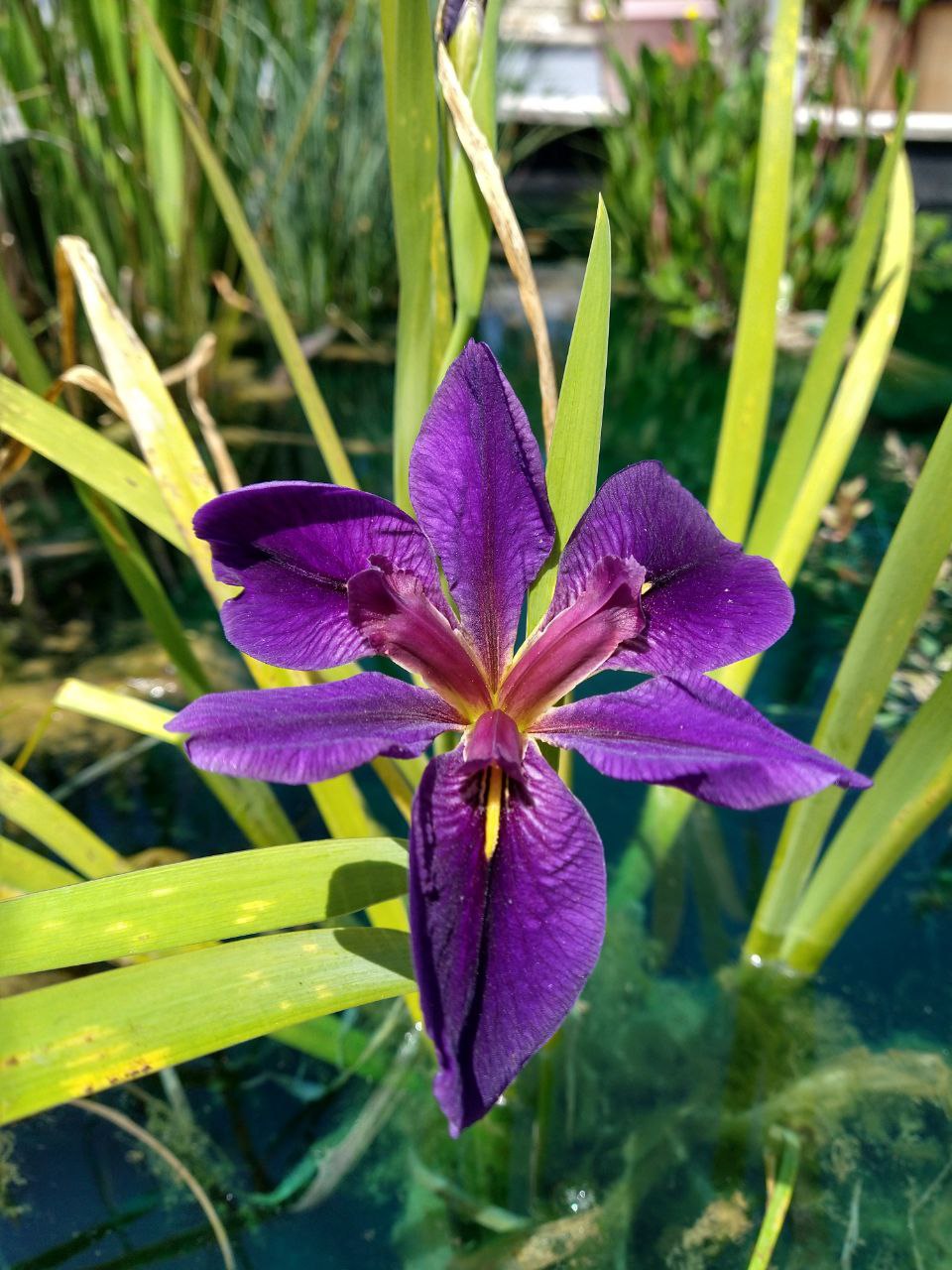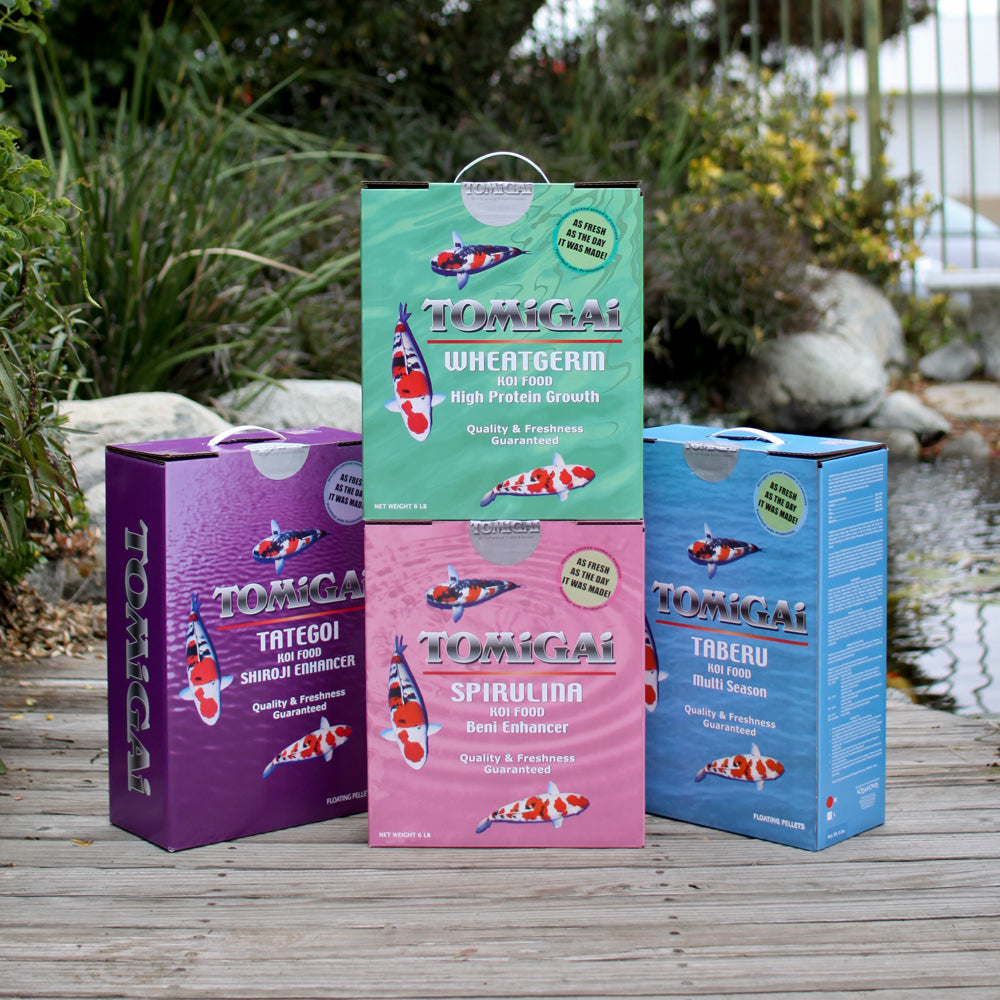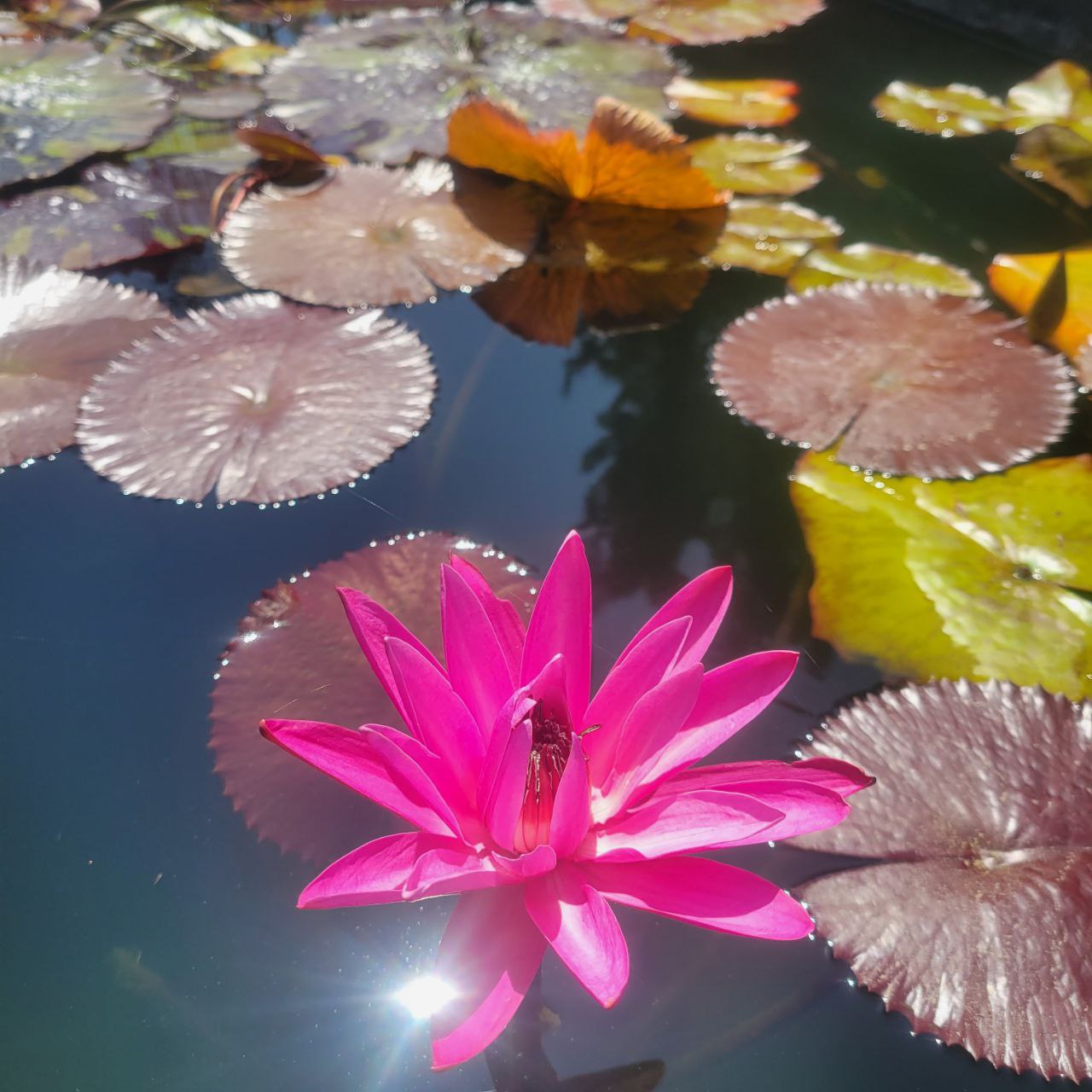Article: Bog Plant Care Guide

Bog Plant Care Guide
Bog Plant FAQ and Care Sheet:
What is a bog plant? Bog plants are semi-aquatic plants that thrive in soft wetland.
What are the pros and cons of adding bog plants to my pond?
Pros:
- Bog plants naturally aid in filtration and water clarity
- Thrive on same same nutrients as algae, and may assist in the control of excess algae growth
- Some bog plants’ roots help aid in pond aeration
- Provide a more “natural” look and add more visual interest to a pond water feature
Cons:
- May be physically laborious or costly to maintain (Ex: bog filter cleanouts, trimming plant overgrowth, repotting, replacing seasonal plants)
- Plant dormancy in the winter reduces the amount of filtration during colder months. Most bog plants will return in the spring/summer.
- In cases of ponds with excess levels of fish waste, bog plants may reduce the amount of essential oxygen your fish need to survive.
Caring for your bog plants:
- Most bog plants prefer full sun or areas that get 6+ hours of direct sunlight and waters that average no more than 12-30 inches deep.
- Vigorously growing plants may need regular trimming if they overgrow their space. Overgrown perennial bog plants may be propagated and divided into smaller plants.
- Winterizing: Once temperatures cool and your bog plants begin to brown, prune any decaying plant matter. Most hardy bogs can remain in the same spot and will return in the spring. Tropical bogs should be brought indoors under a grow light with the soil kept moist. Taros/Canna tubers can be stored in slightly moist peat until replanting in the spring.
- Monitoring and removing all signs of plant decay or mold during winter months is recommended.
- Bog plants prefer damp, peaty, sandy soil. A clay/sand mix may also be used. Mystic Koi carries soil safe for use with both aquatic plants and animals.
What is a bog filter? Bog filters are natural biological filtration systems that use beneficial bacteria and live plants to aid in the removal of waste and impurities in your pond water. A proper-sized bog filter is recommended to be at least 10% the size of your pond volume for minimal fish, and increased to 30% or more for overstocked ponds.
For example: A pond is 500 gallons with 4 goldfish. 10% of 500 gallons would give you a 50 gallon bog filter. However, the same sized pond with 10+ koi/goldfish would need a minimum of 150 gallon bog filter to accommodate for excess fish waste.
Will my fish eat my bog plants? Maybe! While most goldfish and baby koi will live in harmony with your plants, hungry or overstocked fish may choose to make your plants a tasty snack. Larger koi are more often guilty of this and are inclined to root around in the plant soil.
What is a bog plant? Bog plants are semi-aquatic plants that thrive in soft wetland.
What are the pros and cons of adding bog plants to my pond?
Pros:
- Bog plants naturally aid in filtration and water clarity
- Thrive on same same nutrients as algae, and may assist in the control of excess algae growth
- Some bog plants’ roots help aid in pond aeration
- Provide a more “natural” look and add more visual interest to a pond water feature
Cons:
- May be physically laborious or costly to maintain (Ex: bog filter cleanouts, trimming plant overgrowth, repotting, replacing seasonal plants)
- Plant dormancy in the winter reduces the amount of filtration during colder months. Most bog plants will return in the spring/summer.
- In cases of ponds with excess levels of fish waste, bog plants may reduce the amount of essential oxygen your fish need to survive.
Caring for your bog plants:
- Most bog plants prefer full sun or areas that get 6+ hours of direct sunlight and waters that average no more than 12-30 inches deep.
- Vigorously growing plants may need regular trimming if they overgrow their space. Overgrown perennial bog plants may be propagated and divided into smaller plants.
- Winterizing: Once temperatures cool and your bog plants begin to brown, prune any decaying plant matter. Most hardy bogs can remain in the same spot and will return in the spring. Tropical bogs should be brought indoors under a grow light with the soil kept moist. Taros/Canna tubers can be stored in slightly moist peat until replanting in the spring.
- Monitoring and removing all signs of plant decay or mold during winter months is recommended.
- Bog plants prefer damp, peaty, sandy soil. A clay/sand mix may also be used. Mystic Koi carries soil safe for use with both aquatic plants and animals.
What is a bog filter? Bog filters are natural biological filtration systems that use beneficial bacteria and live plants to aid in the removal of waste and impurities in your pond water. A proper-sized bog filter is recommended to be at least 10% the size of your pond volume for minimal fish, and increased to 30% or more for overstocked ponds.
For example: A pond is 500 gallons with 4 goldfish. 10% of 500 gallons would give you a 50 gallon bog filter. However, the same sized pond with 10+ koi/goldfish would need a minimum of 150 gallon bog filter to accommodate for excess fish waste.
Will my fish eat my bog plants? Maybe! While most goldfish and baby koi will live in harmony with your plants, hungry or overstocked fish may choose to make your plants a tasty snack. Larger koi are more often guilty of this and are inclined to root around in the plant soil.



